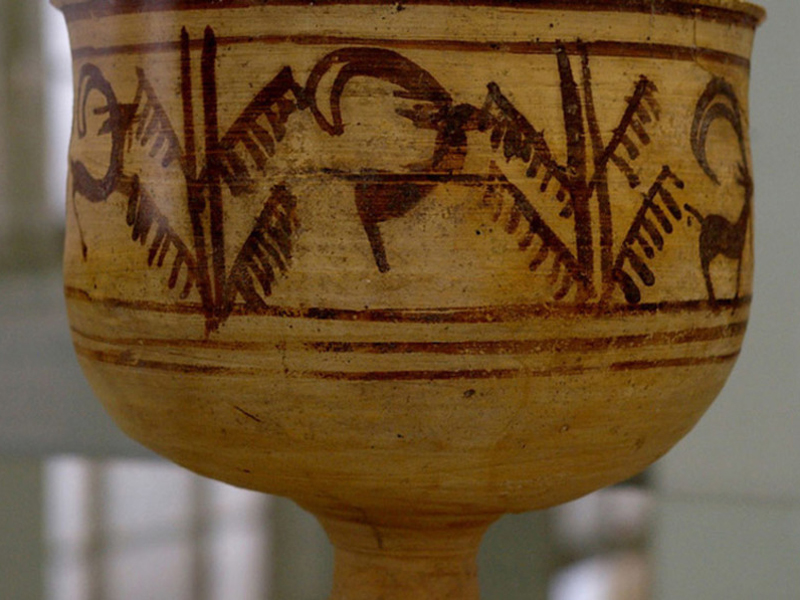The Shahr-e Sukhteh is one of the ancient civilizations in Iran that has attracted the attention of archaeologists worldwide and even ordinary people for many years. This ancient city, located in Sistan and Baluchestan Province, has been accompanied by new wonders since its first discoveries until today. The Burnt City (Shahr-e Sukhteh) of Sistan, also recognized as a UNESCO World Heritage site, is the only ancient region in Iran that has been the site of historical excavations from the Qajar period to the present day, with ongoing studies and historical investigations. But why is it called the Burnt City? Join us in this article with Eli Gasht to find the answer to this question.
Book Iran Air flights from London to Tehran and Tehran to London with Eligasht UK:
Introduction to the Shahr-e Sukhteh
The Shahr-e Sukhteh is an ancient city located between the rivers of Hamoon and Hirmand in Sistan and Baluchestan Province, about 50 kilometers south of Zabol. In fact, this city is situated in the easternmost region of Iran and near the border of Iran and Afghanistan, at a distance of 170 kilometers from Zahedan. The history of this historical city dates back approximately 5,000 years. This city, is known as the “City of Firsts” (due to the discovery of many firsts in human history in this region), the “City of Knowledge,” the “City of Art,” and the “City of Peace,” existed simultaneously with the civilization of Jiroft and the Copper Age in the Iranian plateau, predating the migration of Aryan tribes to this land.
Due to the discovery of certain Elamite inscriptions, some attribute this civilization to the Elamites. However, in Sumerian tablets, a civilization called “Aratta” is mentioned with lapis lazuli decorations and magnificent towers, many of which are believed to be related to the Shahr-e Sukhteh of Sistan.
Discovery of the Shahr-e Sukhteh
You may wonder who discovered the mysterious Shahr-e Sukhteh of this region for the first time. Some believe that an Englishman was the first to discover this historical site. However, it appears that the first discoverer of this area was a Hungarian named “Sir Aurel Stein.” He was the same person who discovered the Cave of the Thousand Buddhas in China and was the discoverer of the oldest printed book in history. He discovered this ancient city in 1937 while working for the English. After that, Italian archaeologists, led by “Maurizio Tosi,” conducted excavations in this area from 1967 to 1978. Since the Islamic Revolution, the Sistan Cultural Heritage, Handicrafts, and Tourism Organization have been engaged in historical research and exploration in this region.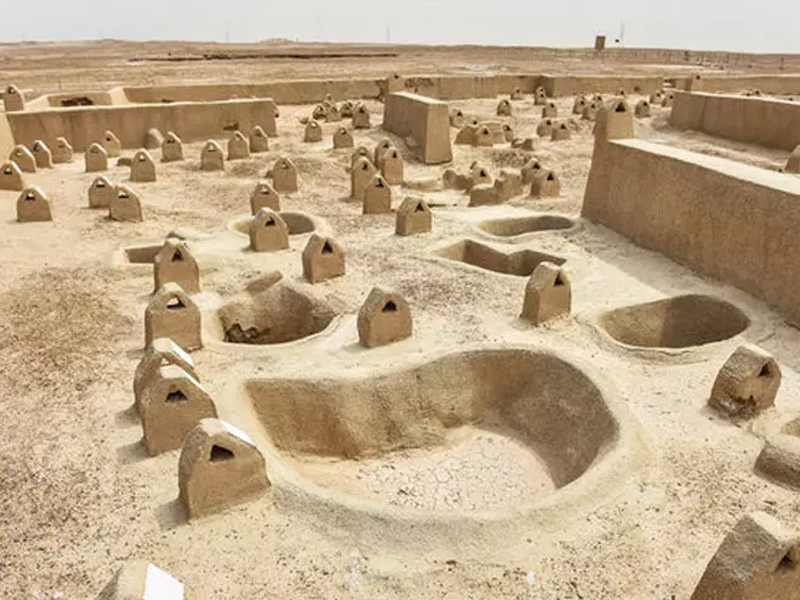
It should be noted that in 2002, a flood occurred in this area, uncovering fresh remnants of this ancient city from under the ground and leading to the discovery of more wonders.
Story of the Shahr-e Sukhteh
Before we delve into answering the main question of the article, it is better to become more familiar with this historical site. As mentioned, the Shahr-e Sukhteh is located in a dry, hot, and desert region. So how did an advanced civilization emerge in such a place? In response to this question, it should be noted that this area was once very lush with abundant trees and fertile land, contrary to what we see today. The nearby rivers, namely the Hirmand and Hamoon, used to be full of water, and the climatic conditions of the entire region were completely different from what they are today.
About 4,000 years ago, a people who had recently acquired sedentary lifestyles (and whose origins are still not fully known) came to this fertile region, which served as a bridge between the Indian subcontinent and the Iranian plateau. They built a highly advanced city, known as the Burnt City. The area of the Burnt City of Sistan was about 280 hectares, and people lived in it during four historical periods.
Development of the Shahr-e Sukhteh
The Shahr-e Sukhteh of Sistan was built in a region with vast plains and fertile farmlands. It had the dry riverbed of the “River of Deserts” (one of the dried-up branches of the Hirmand River) within its boundaries, making it highly suitable for agriculture and other activities. This ancient city rapidly developed, and various sections, such as residential areas, industrial zones, monumental buildings, and cemeteries, were formed. The Burnt City was the largest Bronze Age settlement, and its prosperity led to superiority over other cities in fields such as science, medicine, industry, society, economy, commerce, agriculture, and animal husbandry. Furthermore, its cultural and trade connections extended from the north to southern Turkmenistan, from the south to the shores of the Arabian Sea, from the west to the central plateau of Iran and Mesopotamia, and from the east to Afghanistan and the Sindh Valley.
The Flourishing Shahr-e Sukhteh of Sistan
During the period of its prosperity, between 2500 and 2200 BCE, approximately 55,000 people lived in the city. It should be noted that the majority of the population consisted of farmers and craftsmen. Industries such as textile weaving, stone carving, jewelry making, fishing, and the production of fishing nets thrived in this city. The discovery of 12 types of woven fabrics, jewelry, various types of pottery and stone vessels, inlays, mats, fishing hooks, and many other artifacts indicate the existence of these industries.
Additionally, as mentioned earlier, many “firsts” in the world were discovered in this region, such as the first artificial eye, the first animation, the first skull surgery, and the first ruler. These findings indicate the remarkable advancement in sciences like medicine among these people. The Burnt City of Sistan also had a highly advanced water and sewage system with ceramic pipes, which distinguished it from other ancient cities.
Why did the burned city disappear?
Perhaps you are curious to know why a city with such an advanced and progressive civilization in its time became uninhabited and vanished. Although no one can definitively explain the reasons for the destruction of the Shahr-e Sukhteh of Sistan, some speculations can be made. Environmental factors, climate changes, transformations in global trade relations in the late 3rd millennium BCE, invasions by neighboring tribes, the diversion of the Hirmend River, floods, and fires are among the theories proposed by archaeologists for the demise of this city.
Due to its unique geographical location, the absence of water penetration into the ground, and the lack of a defined route for rivers, coupled with the evaporation of water by the 120-day winds and intense sunlight, this ancient city gradually became uninhabited over the years. Some believe that the inhabitants of this region gradually migrated to the Punjab region because the artifacts found in Punjab bear a striking resemblance to the remains of the burned city of Sistan.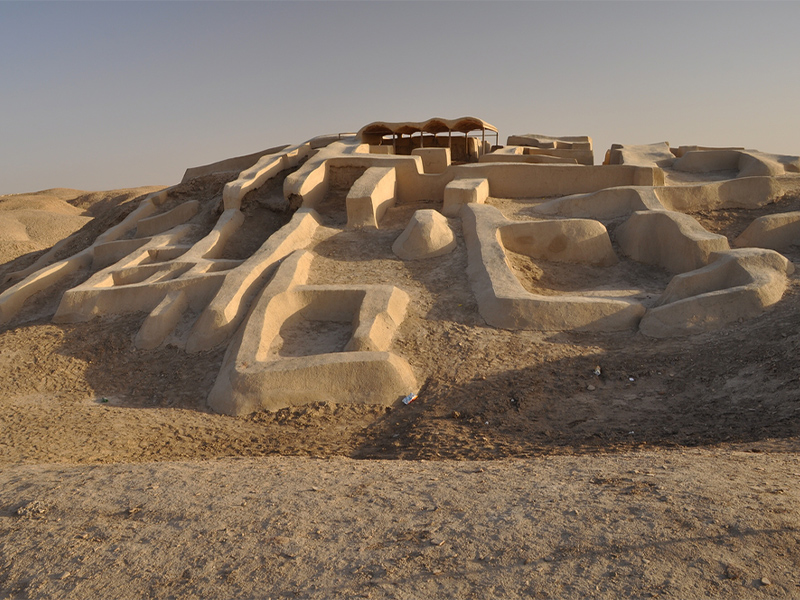
Now that we have become somewhat familiar with this historical site, it is better to return to the main question of this article. Why is this place called the burned city? It is said that the first time explorers encountered this ancient area, layers of ash were settled on the surfaces, towers, and walls of the city. For this reason, they initially assumed that the city had been burned and gave it the name “the Shahr-e Sukhteh.”
Fire or the illusion of fire?
The oldest report of the burned city dates back to 1872 AD and belongs to Owen Smith, an English captain. In his report, he refers to a city that the locals call “Shahr-e Rostam” and believes that Bahram set it on fire after scattering oil around the city.
Although it is said that this historical city witnessed significant fires in three different periods, it seems unlikely that the presence of these ashes or the city’s disappearance was caused by a fire. Since this advanced city was essentially an industrial city with various furnaces, it is presumed that these ashes were the result of industrial furnaces and their activities. Interestingly, the first person to name this city the burned city was an Englishman named Colonel Beat. Another theory for the presence of ashes in this city is the burning of livestock and agricultural products by the people living there to obtain food.
Wonders of the burned city!
Perhaps it would be better to talk a little about the wonders and marvels discovered in the Shahr-e Sukhteh. These wonders have attracted the world’s attention and made it the city of firsts. If you are interested in learning more about these marvels, stay with Eligasht in the following.
related post
Experience different tastes of the local dishes in Chabahar!
Travel Guide to Chabahar: A Must-Visit Destination in the Middle East
The City of Peace
As we mentioned earlier, one of the titles used for this ancient mysterious city is the City of Peace. But why is it called the City of Peace? Contrary to what some say about the destruction of the burned city, claiming that it was due to war and the attack of neighboring tribes who set the city on fire, no war weapons have been found in this city so far! Additionally, this city had no gates, indicating its good relations with neighboring cities and civilizations. Therefore, the theory of war and the warlike nature of these people is fundamentally incorrect. The absence of any war-related tools in this city indicates the peaceful nature of its inhabitants, and that is why it is called the City of Peace.
The First Artificial Eye in the World!
One of the most famous wonders of the Shahr-e Sukhteh of Sistan is the discovery of the world’s first artificial eye. During excavations in the cemetery of this area, the bones of a woman, approximately 25 to 30 years old, were found. She had a tall stature and was well-built. In the eye socket of this woman, a prosthetic eye made of bitumen and a type of animal fat with golden threads for the eyelashes was discovered. It appears that this woman was not a native inhabitant of the city but had come from elsewhere to this city.
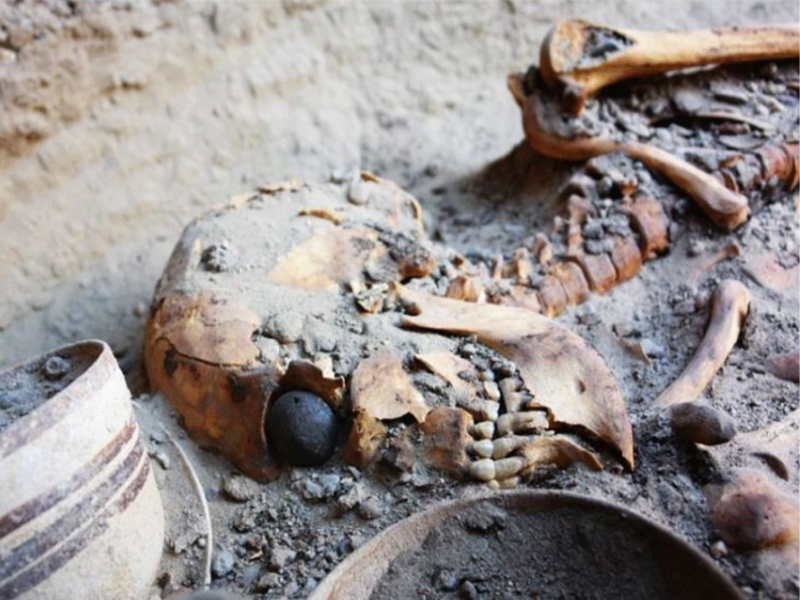
The First Skull Surgery in the World!
It might interest you to know that the evidence of the world’s first skull surgery was also found in this city. In fact, during excavations in the cemetery area of this city, the bones of a 13-year-old girl were discovered, and traces of surgery were found on her skull. This girl survived for several months after the surgery, as evidenced by the signs of bone healing found on her skull.
The First Animation in the World!
This is undoubtedly the most peculiar item on the list of wonders in this city. It’s important to note that when we mention animation here, we are not talking about an animated film, but rather the illusion of movement created by shaking a cup. A cup from the burned city was discovered with engraved patterns on it, and when we move the cup, the illusion of movement is created. This cup with animal-like patterns resembling a deer is currently preserved in the Museum of Ancient Iran.
The First Backgammon in the World!
Another discovery in the region of the burned city of Sistan is a game similar to backgammon. This game is the oldest complete set of games discovered in the world, dating back approximately 4,700 years. It consisted of 27 pieces and 4 different dice, and it had various ancient rules that made it the most complete intellectual game in the ancient world.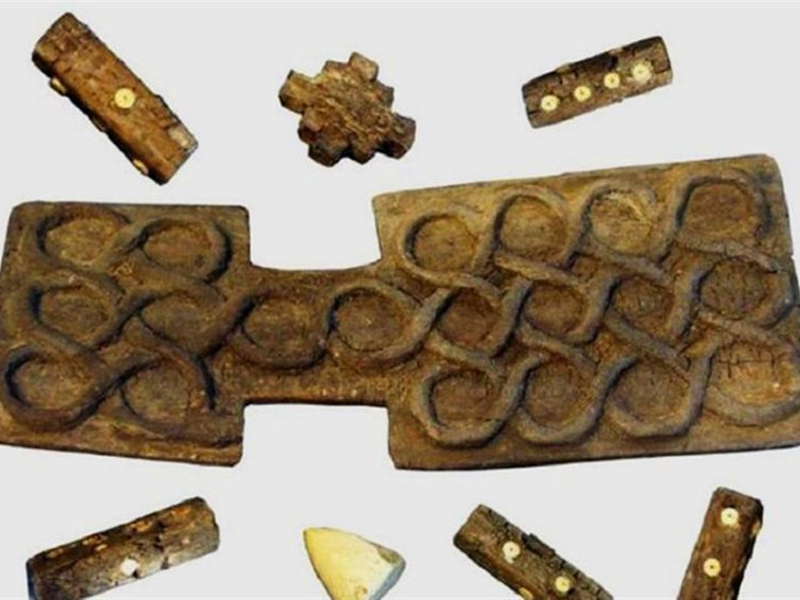
Visiting the Shahr-e Sukhteh
Surely, with knowing all these wonders and marvels about the ancient civilization of the Shahr-e Sukhteh, you must have been motivated to visit it yourself. It is better to choose the autumn season to visit this great historical area because the weather in this region is very hot. To reach the Burned City, it is better to first go to the cities of Zahedan or Zabol and then make your way to this region. Due to the long distance, we recommend traveling by air. Among the historical sites in the vicinity, we can mention the historical structures and windmills of the ancient area of Hozdareh, Rostam Castle in Zabol, and Khwaja Mountain. The cemetery and museum of the Burned City are the most notable parts of this historical site. The Zahedan Museum also houses many artifacts obtained from this region.
Final words
The Shahr-e Sukhteh of Sistan was one of the most advanced ancient civilizations during the Bronze Age in the Iranian Plateau. It was discovered by British explorers during the Qajar period, and archaeological excavations in the area continue to this day. This historical city is located in the Sistan and Baluchestan region and has unearthed wonders that have amazed the world, such as the world’s first skull surgery and the first artificial eye. Some believe that this city was burned down, but this theory has been debunked. If you are interested in visiting Iran’s ancient artifacts, don’t miss the chance to visit this mysterious ancient city.
Frequently Asked Questions about the Burned City:
-
Why is it called the Burned City (Shahr-e Sukhteh)?
Some early explorers believed that the city was burned, as a layer of ash was observed on surfaces, towers, and walls of the city. However, further research showed that this ash was likely a result of industrial activities and city furnaces.
-
Why did the Shahr-e Sukhteh disappear?
No one can definitively say the reason for the destruction of the Burned City, but various factors such as climate changes, shifts in trade relations, attacks from neighboring tribes, changes in the course of the Helmand River, floods, and fires could have played a role.
-
Who discovered the Burned City?
The first reports of the Shahr-e Sukhteh were presented by an Englishman named Owen Smith in 1872 AD. However, scientific excavations in this area began in 1937 by Sir Aurel Stein.
-
What has been discovered in the Shahr-e Sukhteh?
The Shahr-e Sukhteh gained worldwide fame for the discovery of many “firsts” in the world, such as the first artificial eye, the first skull surgery, the first animation, and the first ruler. Additionally, the city had an advanced water and sewage system with clay pipes.
-
Was the Burned City actually burned?
No, the evidence indicates that the ashes found in the Shahr-e Sukhteh were a result of industrial activities and city furnaces.
-
When is the best time to visit the Shahr-e Sukhteh?
The best time to visit the Shahr-e Sukhteh is in the autumn season when the weather is cooler.


